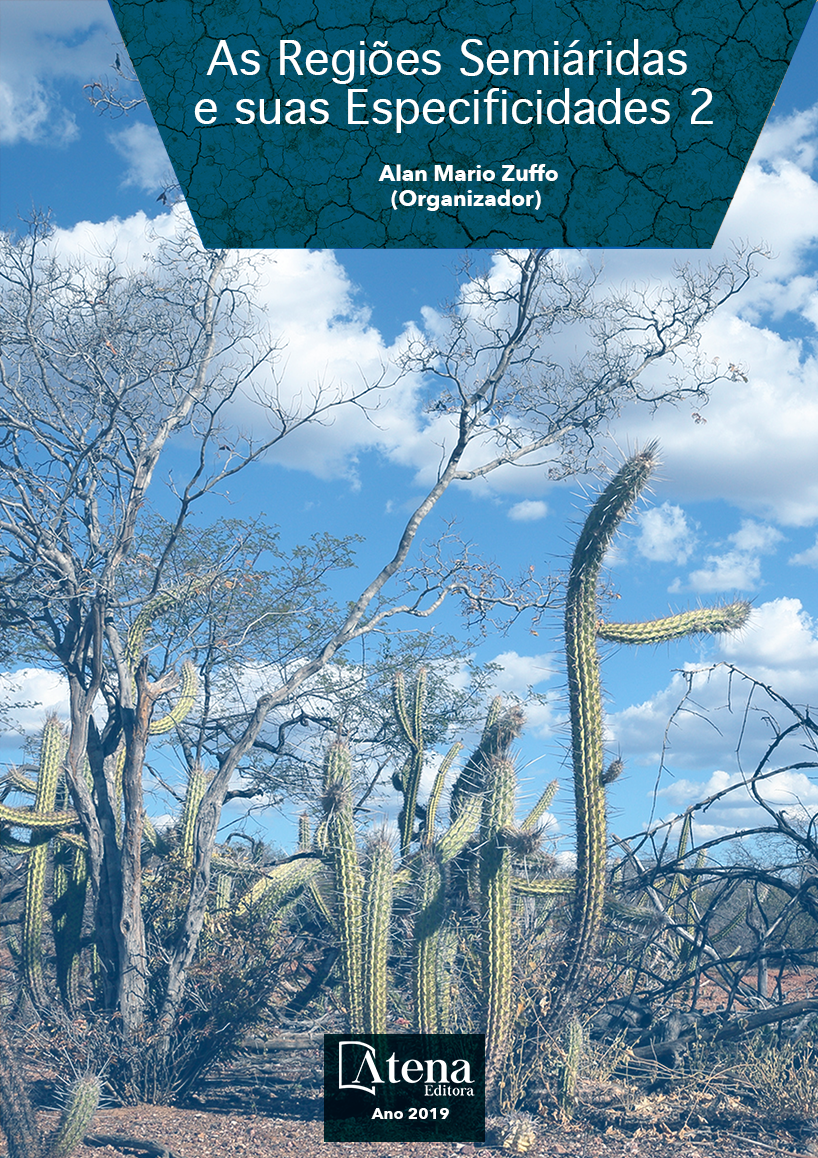
CRESCIMENTO DE DOIS ACESSOS DE JATROPHA CURCAS L. SUBMETIDOS AO DÉFICIT HÍDRICO SIMULADO PELO POLIETILENOGLICOL 6000
Um dos estresses abióticos que mais
afeta o desenvolvimento de plantas na região
semiárida é a seca. A baixa disponibilidade de
água provoca danos diretos às células inibindo
seu crescimento. Conhecimentos sobre a
capacidade de resistência de determinadas
espécies vegetais, quanto a esse tipo de
estresse, são de fundamental importância
para o manejo e conservação das mesmas.
Portanto, o objetivo deste trabalho foi avaliar
as respostas fisiológicas, utilizando parâmetros
de crescimento, de Jatropha curcas submetidas
ao déficit hídrico induzido pelo agente estressor
Polietilenoglicol (PEG 6000). Foram utilizadas
sementes de J. curcas de dois acessos, um
de origem cubana (CNPAPM–XVIII) e outro de
origem brasileira (CNPAPM–X). Após o período
de aclimatação, as plântulas foram colocadas
na ausência (controle) e na presença do agente
estressor PEG 6000 a -0,4 MPa. As plântulas
permaneceram no estresse durante um período
de 24 horas. Além do comprimento da parte
aérea (CPA), do diâmetro do caule (DC) e do
comprimento de raiz (CR), foram mensurados a
área foliar (AF), as massas frescas (MF) e secas
(MS) e o percentual de umidade (U%) de folha,
caule e raiz. O déficit hídrico afetou o crescimento
de plântulas de J. curcas. A intensidade da
resposta variou conforme o acesso e órgão
estudado. As folhas foram as mais afetadas.
O acesso CNPAPM–X apresentou maior
resistência ao déficit hídrico, expresso através
dos indicadores de crescimento avaliados.
CRESCIMENTO DE DOIS ACESSOS DE JATROPHA CURCAS L. SUBMETIDOS AO DÉFICIT HÍDRICO SIMULADO PELO POLIETILENOGLICOL 6000
-
DOI: 10.22533/at.ed.9161915034
-
Palavras-chave: Pinhão-manso; seca; indicadores crescimento.
-
Keywords: Jatropha; drought; growth indicators.
-
Abstract:
Drought is one of the abiotic
stresses that most affects the development
of plants in the semi-arid region. The low
availability of water causes direct damage to
the cells by inhibiting their growth. Knowledge
about the capacity of resistance of certain
vegetal species, as to the type of stress, are of
fundamental importance for the management and conservation of the same. Therefore,
the objective of this study was to evaluate the physiological responses, using growth
parameters, of Jatropha curcas, submitted to water deficit induced by the stressing
agent Polyethyleneglycol (PEG 6000). Seeds of J. curcas of two access, one of Cuban
origin (CNPAPM-XVIII) and another of Brazilian origin (CNPAPM-X) were use. After
the acclimation period, the seedlings were placed in the absence (control) and in the
presence of the stress agent PEG 6000 at -0.4 MPa. The seedlings remained in the
stress during a period of 24 hours. In addition to aerial part length (CPA), were measured
stem diameter (DC), root length (CR), leaf area (FA), fresh (MF) and dry mass (MS)
and percentage of humidity (U%) of leaf, stem and root. The water deficit affected
the growth of J. curcas seedlings. The response may vary in relation to access and
plant organ studied. The leaves were the most affected organ. The CNPAPM-X access
presented the highest resistance to water deficit, expressed through the evaluated
growth indicator.
-
Número de páginas: 15
- Yuri Lima Melo
- Patricia Ortega-Rodes
- Josemir Moura Maia
- Cristiane Elizabeth Costa de Macêdo
- Fernanda Vitoria Silva do Nascimento


